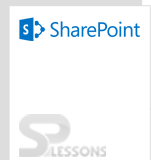Sharepoint is a list having the common set of list functionality.
- content types
- Columns (or site columns)
- Views
- Permissions
- Workflow
- Versioning
- Export to Spreadsheet. Put the list into an Excel Spreadsheet, opening Excel on the client computer.
- Open in Access. Put the list in an Access database.
- View RSS feed. See the raw RSS feed. Every list is RSS-enabled by default, allowing you to change the flow of web-oriented data from a pull-based model to a push-based model. This is a very significant change, especially for collaborative lists with critical information.
- Alert Me. This allows you request an email when things change. There are some configuration options here. Again, this enables you to turn the information flow into a push-based model.



